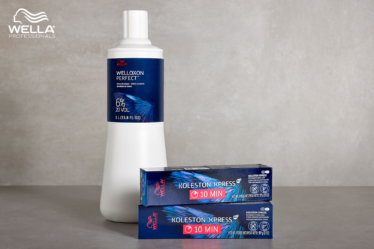
There are many different ways to become more sustainable with your wardrobe. Hopefully, the tips mentioned in this article will help you be more environmentally conscious with your wardrobe!
Repurposing
Before throwing out your old jeans, reconsider repurposing them into shorts or capris. Sew a clean edge on the bottom or add some fringe to make your jeans more appealing.
If you can’t get rid of your old clothes, consider handing them down to friends and family members. Donate outgrown clothes to friends or relatives, or donate them to children who need them. Even better, you can hand down clothes to others and get rid of them for free! The more clothes you donate, the more sustainable it is! So, start repurposing your wardrobe today!
Investing in slow fashion
If you’re considering a transition to a more sustainable wardrobe, investing in slow fashion is a great way to reduce your overall consumption. Slow fashion is about buying pieces you’ll actually wear, rather than acquiring new ones every season. Investing in slow fashion means avoiding impulse purchases and learning to knit or sew clothes. It also means buying pieces you can wear for several years.
You’ll find many sustainable brands on the market these days. Slow fashion retailers are devoted to creating clothes made from natural materials and durable fabrics. These brands make every item in-house, rather than outsource production, and don’t rush to please the masses. This means that their prices are higher, but you’ll pay a higher price for the quality. By taking your time to research slow fashion brands, you’ll save both money and the environment.
Using sustainable fabrics is a great way to reduce your wardrobe’s carbon footprint. Many clothes have been produced by factories that use harmful chemicals that have a negative effect on the environment. The use of synthetic materials creates microscopic particles that end up in water sources. Much textile waste is emitted into the air, water, and soil, where it ends up in a wide range of harmful substances. By investing in slow fashion, you’ll save money on clothes that you wear frequently. You should also try to invest in pieces that you wear a lot instead of pieces that you don’t wear all the time.
Buying vintage
The initial re-sale of vintage clothes requires no additional materials, which means less energy is used in their creation. The only energy required during the process of re-sale is for a stitch, button, or hem to be mended. Buying second-hand clothes also contribute to a more sustainable wardrobe because they have not been mass-produced. In addition, buying vintage clothes also saves money on new items and helps the environment, too.
Second-hand clothes are a good choice when you want a particular look or style. Buying vintage clothes also contributes to a greener wardrobe, as they tend to be of higher quality. You can also find clothing that is in excellent condition, such as a 1970s polyester blouse. Purchasing second-hand clothes also helps the environment because they are made from heavy-duty materials such as denim or heavy-duty fabrics.
In addition to being more affordable, buying second-hand clothing is a better investment. You can buy a vintage piece for a fraction of the cost of new clothes. Plus, these second-hand clothes tend to hold their value better than brand-new clothes. You can also recycle them to reduce the amount of waste and polluting resources. These are some of the reasons why buying second-hand clothes makes your wardrobe a little more sustainable.
Buying second hand
Fast fashion giants like H&M, Zara and Forever 21 dominate the market, resulting in an overabundance of high-end brands. It’s easy to get confused about which brands to buy and which ones don’t. In a world where fashion is a huge business, buying secondhand clothes can be a refreshing change.
Purchasing second-hand clothes is an easy and affordable way to reduce your wardrobe’s environmental impact. Secondhand clothing is available in your local charity shop, and there are even apps that allow you to buy and sell used clothes. Not only will buying secondhand clothes save the planet from the energy used to produce new items, but it will also ensure that your wardrobe is unique and cheaper than it might be if you bought brand new.
You can also donate unwanted clothing rather than throw it away. By donating clothes you no longer need, you will be helping others become more environmentally friendly. You’ll also be helping your local community by diverting waste from landfills. You can also sell your secondhand clothes online. You can find secondhand clothing from a variety of websites and apps that make it easy to upcycle your clothes.
Washing less
The best way to make your wardrobe a little more sustainable is to buy items that serve as versatile year-round pieces. Invest in items that can seamlessly transition from day to night without a need to be washed. This can be achieved with simple clothes such as classic dresses and cozy cardigans. You can also invest in timeless jackets and coats for all seasons. Ultimately, you can make your wardrobe more sustainable and enjoy a more comfortable lifestyle.
Aside from washing less, another way to cut down on your wardrobe’s water and energy usage is to rotate your clothes. Instead of storing them at the back of your wardrobe, put them in the bottom or back when you’re not wearing them. Then, you can choose one of the front ones next time you need to pick an outfit. This way, you’ll end up back where you started! This method is effective for two reasons: it helps reduce your clothes’ water usage, and it also enables you to save money on energy and water bills.
Using a good Wash and fold laundry service is an incredibly efficient way to reduce your wardrobe’s environmental impact. Professional service providers typically use high-efficiency machines that consume up to 40% less energy than that of household models.
Investing in organic fabrics
Natural fabrics are better for the environment than synthetic ones. Natural fabrics include cotton, linen, hemp, flax, jute, silk, and wool. You can also opt for low-impact materials such as Lyocell or Modal. Synthetic fabrics are made from petroleum, shed during washing, and are not good for the environment. Organic fabrics reduce your carbon footprint by reducing the amount of pesticides used to produce them and keep our water sources clean.
Choosing sustainable materials for your wardrobe will not only make you feel good, but will also make your clothes last longer. If you’re looking for sustainable materials, look for brands that have GOTS or Fair Trade certification. Organic fabrics also tend to last longer than synthetic materials. Just be sure to check the label so you don’t end up buying a pair of jeans made of synthetic material.
Buying from thrift stores
Buying from thrift stores is a great way to reduce the carbon footprint of your wardrobe. Buying good-quality items will last longer than cheap ones, which means you’ll get more bang for your buck. According to Vivienne Westwood, buying less is more sustainable than buying more. This is especially important for wardrobes that change frequently. Investing in classic and timeless pieces will also make your wardrobe more sustainable.
If you’d like to make your wardrobe a little more sustainable, buy from brands that recycle their clothes. Many companies offer cash back or credit for used clothing. Look for sustainable and ethical labeling on labels, which will guarantee that the clothes you buy are manufactured ethically and sustainably. You can also organize clothing swaps. Buying from thrift stores will also save you a significant amount of money over the long run.
If you’re new to thrift shopping, keep in mind that you’ll need to exercise more self-control than you normally would. You’ll want to be selective, as you don’t want to buy anything just because it’s cheap. It’s important to be aware of the smell of used clothing before buying. Also, remember to take your time. It takes longer to browse through the clothing at a thrift store than to shop for new items. You’ll also need to try on the items to ensure that they’re still in good condition.



